As the population continues to age, and the rate of chronic disease grows with it – the pressure on medical diagnostics has never been greater. According to recent data, 80% of patient pathways in the NHS are reliant on radiology – including X-ray, ultrasounds, CT and MRI scans. This has seen the demand for diagnostics increase year on year, with some modalities experiencing demand that far outweighs capacity.
Despite the profession’s critical role within healthcare, widespread recruitment freezes and a growing shortfall of radiology staff continue to impact diagnostics. According to a 2025 article by the Royal College of Radiologists (RCR), cancer care in particular is suffering due to an estimated shortfall of 1,962 consultant radiologists and 185 fewer clinical oncologists. This is leading to missed targets surrounding wait times, potential delays in treatment, and a negative impact on patient outcomes.
The scale of the problem
According to the latest clinical radiology census from the RCR, based on its current trajectory, the radiology workforce is expected to face a shortfall of 40% by 2028 (approximately 3,670 radiologists). To plug the gap, the NHS has been left caught in a trap where it is reliant on costly contract workers, and those who are working in the profession are expected to do more unsociable hours, putting them at risk of burnout.
According to the 2024 NHS Staff Survey, published in March 2025, feelings of stress and burnout remain unacceptably high among NHS employees, with 41% of staff unwell as a result of work-related stress. These workforce shortages and their knock-on impact on productivity have resulted in a vicious cycle whereby further backlogs and delays are created within Trusts, with many leaving the profession before retirement age as a result.
With plans underway to put an end to the current NHS waiting list backlogs by making millions more appointments available, the reliance on people power – creating additional strain within departments such as radiology – has never been greater. Leaving the workforce shortage unaddressed, therefore – even in the short term – simply isn’t a viable option.
Making an immediate impact
Whilst tackling challenges surrounding recruitment and attracting fresh talent into the profession is essential to address workforce shortages in the future, the reality is that it will be several years until the benefits of these initiatives become evident.
For example, in the UK, diagnostic radiographers must complete an approved degree or master’s in diagnostic radiography, typically taking three or four years full-time. While becoming a clinical radiologist takes a minimum of twelve years’ training: five or six years Medical School, two years completing the NHS Foundation Programme, followed by five years’ Speciality Training.
With pressure only continuing to grow on the profession, immediate action is needed to support radiology staff in the interim – and this is where technology, particularly AI, has an increasingly important role to play.
Keeping up with demand
Advancements in AI offer huge potential for reducing the burden on diagnostics and healthcare more broadly, with organisations such as the Society of Radiographers (SoR) recognising its importance in meeting patients’ needs quickly and with increased accuracy. These tools, however, are not intended to replace radiologists. In such a high-risk environment where life-and-death decisions are commonplace, human oversight and involvement in decision-making remain critical. Instead, the focus should be on AI to augment a clinician’s capabilities by reducing the burden of repetitive and time-consuming tasks, allowing them to focus on the complex cases that require human expertise.
For example, medical imaging systems equipped with Deep Learning Reconstruction (DLR) AI algorithms can automatically differentiate ‘noise’ from true signal to provide enhanced detail and image clarity. By utilising this technology, scan time can be reduced and the clarity needed for effective decision-making can be obtained more easily by the radiologist, which also results in a smoother experience for the patient.
In addition to improving scan quality, AI and deep learning technologies can significantly enhance the productivity and efficiency of radiologists by streamlining workflows. For example, today, workflow automation solutions are available to automate steps such as scan planning and patient positioning. Automatic scan planning using Anatomical Landmark Detection (ALD) technology can accurately identify the anatomical structures required to perform fully automatic scan planning for all routine exams.
Automating key steps post-scan also helps to ease the process of diagnosing and treating patients. By automatically exporting images from the scanner and presenting them in a consolidated format – with data analysed, tagged and sorted based on patient-specific information – the information is ready to be interpreted by the relevant care team. Doing so can ensure urgent cases are flagged and triaged rapidly and appropriately. This helps to support workload prioritisation and ensures confident clinical decisions are made in real-time, at the point of delivery and beyond.
Embracing AI across healthcare
AI certainly isn’t a quick fix for the challenges currently being faced by the radiology workforce, but, when harnessed effectively and appropriately, it can play a significant role in easing the pressure, enhancing productivity and improving both the patient and employee experience. Ensuring Chief Information Officers (CIOs) across NHS Trusts are on board with and understand the benefits on offer is crucial to ensure diagnostic departments are equipped to tackle the current NHS waiting list backlog.
But the journey doesn’t stop at radiology. A similar approach must be taken across every stage of the patient care pathway – from treatment planning to post-diagnosis management. This holistic approach will ensure AI drives valuable change across the entire healthcare ecosystem, rather than just shifting demand down the chain.
The workforce shortage exists across the healthcare industry, so innovation must be factored in at every level and across every department to drive real impact.











